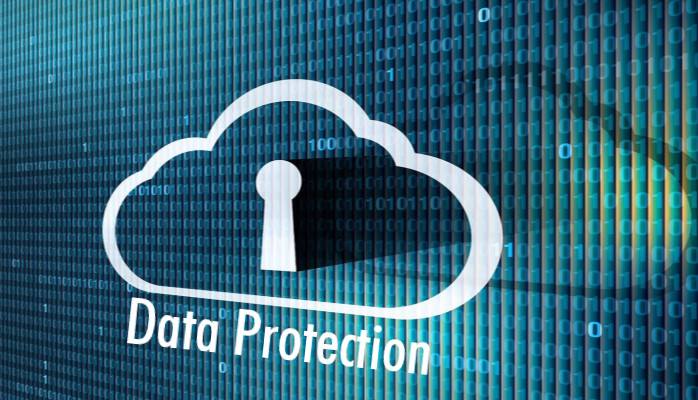Any conversations these days on the urgency for stringent cybersecurity measures come followed by the topic of Data Protection. Data protection is about businesses securing their data from cyber breaches or other malicious attacks and saving it from getting into the wrong hands.
Many times, organisations emphasise the cybersecurity of the network architecture, which is undoubtedly essential and crucial. However, the breaches and attacks are often so meticulously designed that organisations fail to evade them and end up risking their business continuity.
Moreover, ransomware, server failure, and similar disasters can lead to that one IT nightmare that no organisation will want to witness – business downtime. Hence, it is crucial that businesses are prepared with data protection solutions and can access their data in time of any crisis and keep the business running.
Data Protection for Business Continuity
For any data-intensive business, any form of data loss can cause significant inconvenience, disrupting their daily functioning. Therefore, the prime concern for any business is to ensure that any form of data, be it customer’s, business intelligence data, or any operation-centric data, needs to be kept secured and out of reach from an external body, hackers, or even the competition.
When important files and documents are lost, businesses must spend time and resources recreating or recovering these file gaps. In addition, recovered hard copies or files may not be updated as the latest ones. Data loss caused by corruption or viruses poses problems as the extent of data loss caused can sometimes be challenging to determine.
Data loss for an organisation can impact in the long run in the following ways:
Loss of productivity – Businesses that don’t have recovery plans in place in the event of data loss will suffer a disruption in productivity, ultimately leading to reduced profits. Certain documents are used daily by more than one employee to complete specific tasks. In the event of data loss, these documents will no longer be available until recreated.
Harms Brand Reputation – Data loss can hurt the business’s reputation. For a start, many clients may notice that an organisation has experienced data loss. This can affect the trust built with these clients as they may view the business as unreliable.
A survey found that 88% of customers wouldn’t use the services or purchase products from an organisation they distrust, while 39% said they had lost trust in a company due to a data breach or misuse of data. If a business stores data on behalf of clients or customers, they also expect the business to ensure the data is never lost.
Ultimate Shutdown
The inconvenience of data loss can have even bigger implications for your business, when a large amount of data is lost. In a joint report by Ponemon Institute and IBM Security, it was found that the average cost of a data breach has risen to a seventeen-year-high of $4.24 million (about Rs 32 crore) globally in 2021 and in India, that figure stands at Rs 16.5 crore.
Organisations facing data crisis may see ultimate shutdown of their businesses eventually, if not recovered. It was found that 94% of companies that experience severe data loss do not recover it again, and 51% of these companies close within two years of the data loss. 43% of these companies do not reopen again, and 70% of small firms go out of business within a year of a large data loss incident.
Data classification and understanding:
For a successful data security strategy, it is necessary to identify and classify the type of data collected and retained. Data inventories are indispensable for enhancing data-processing activities once a company understands what type of data is processed.
Eliminate leaks by detecting and preventing them – In order to mitigate the risks arising from phishing emails, webpages, and endpoints, organisations need a data loss prevention strategy. The first step towards preventing data leakage is to identify the sensitive data and where it is residing in the critical systems.
Once the sensitive data is identified, it can be then categorised in order of what requires the most amount of protection. Once classified, organisations can make use of Data Loss Prevention (DLP) software to firm up their security strategy. The details of such a strategy will vary based on industry and how any organisation classifies their information.
Protecting the critical information – Having ensured that important data is classified, potential risks are removed, and the next step is to protect the data both during storage and during transmission to achieve true end-to-end security. By encrypting the data at rest, using email encryption, a managed file transfer solution (MFT), or implementing a combination of these options, it can be done.
MFT solution
MFT solutions protect sensitive information, while it’s in the most vulnerable state, during access from others and while being sent to unmanaged domains or devices. By providing audit trails, user access controls, and other file transfer compliance measures, it creates a secure channel for transferring information with a central platform.
News about influential brands facing IT woes, shutdowns, and ransomware attacks is flashed every day. Unfortunately, this signifies that no one is secure from attack, and it is fundamental that CIOs and CTOs across verticals make data protection their biggest priority to keep the game on.
To better understand data protection and related areas, companies can always take assistance from known MSSPs or cloud experts. In addition, having an external partner can help organisations navigate the nuances of data protection and have a more strengthened strategy to manage it.

Vikas Bhonsle
CEO, Crayon Software Experts Indiaqqqqddadd





